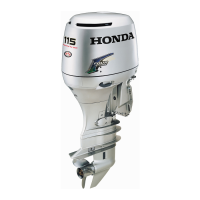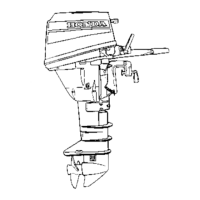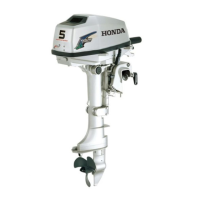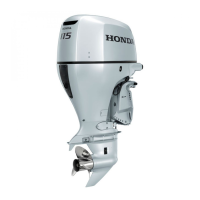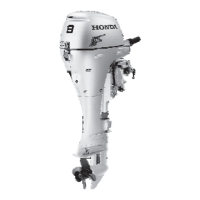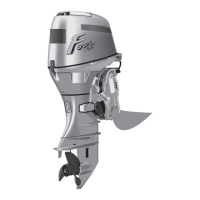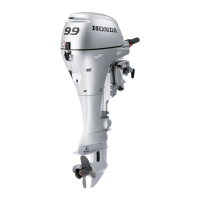
Do you have a question about the Honda Outboard Motor BF135A and is the answer not in the manual?
| Valve Train | SOHC |
|---|---|
| Number of Cylinders | 4 |
| Fuel Induction System | Programmed Fuel Injection (PGM-FI) |
| Starting System | Electric |
| Steering | Remote |
| Gear Ratio | 2.14:1 |
| Cooling System | Water Cooled |
| Exhaust | Through Propeller |
| Warranty | 5 years |
| Lubrication System | Wet Sump |
| Displacement | 2354 cc |
| Max Output | 135 HP |
| Full Throttle RPM Range | 5000 - 6000 RPM |
| Trim Method | Power Trim and Tilt |
| Shaft Length | 20" or 25" |
| Fuel Type | Unleaded Gasoline |
| Engine Type | 4-Stroke SOHC 16 Valve |
Emphasizes safety, potential hazards, and the importance of using good judgment.
General safety advice and warnings about outboard motor use.
Safety precautions for refueling, emphasizing flammability and ventilation.
Outlines the operator's duties for safe operation and emergency preparedness.
Warns about the dangers of carbon monoxide from exhaust gas.
Details lever operation for gear selection and speed, including friction adjustment.
Explains the function and use of the power trim/tilt switch.
Explains the overheat indicator, buzzer, and engine speed reduction.
Details the emergency stop switch for top-mount controls.
Describes the function of the gearshift/throttle control lever for different types.
Details the oil pressure indicator and its relation to engine lubrication.
Emphasizes preparation for safe operation and injury risk reduction.
Advises wearing PFDs, attaching stop switch, and familiarizing with laws.
Highlights the importance of checking the motor's condition before operation.
Emphasizes understanding operation and practice with controls for safe use.
Step-by-step guide on how to prime the fuel system using the priming bulb.
Procedures for starting the engine using side-mount controls.
Details turning the ignition switch and using the fast idle button.
Instructions for starting the engine with panel-mount controls.
Procedures for starting the engine using top-mount controls.
Instructions for stopping the engine in an emergency using the lanyard.
Procedures for normally stopping the engine by moving the control lever to neutral.
Explains shifting gears and adjusting engine speed for different control types.
Key safety precautions for performing maintenance, including hazards.
Continues the maintenance schedule for various components and intervals.
Continues the engine oil change process, including draining and reassembly.
Detailed steps for removing and replacing the engine oil filter.
Safety warnings and procedures for refueling the outboard motor.
Step-by-step guide for draining and refilling engine oil.
Outlines essential steps for preparing the motor for storage.
Troubleshooting for engine not starting due to stop switch or control lever position.
Troubleshooting for engine not starting due to fuel problems like low fuel or clogged filters.
Troubleshooting for engine not starting due to battery or fuse issues.
Troubleshooting for hard starting or stalling related to controls and fuel.
Troubleshooting for hard starting due to spark plugs or system malfunctions.
Troubleshooting for electric starter issues related to main fuses.
Explains low oil pressure indication, buzzer, and engine speed limitations.
Explains overheat indicator, buzzer, and engine speed reduction due to overheating.
Further details on low oil pressure, engine protection, and dealer consultation.
Procedures for checking cooling system and seeking dealer service if issues persist.
Detailed steps for engine oil, spark plugs, and starting after submersion.
Troubleshooting for spark plugs and broader system malfunctions.
Troubleshooting for engine overheating due to clogged water intake screens.
Explains overheating, cooling system indicator, and checking water flow.
Procedures for servicing a submerged motor to minimize corrosion.
